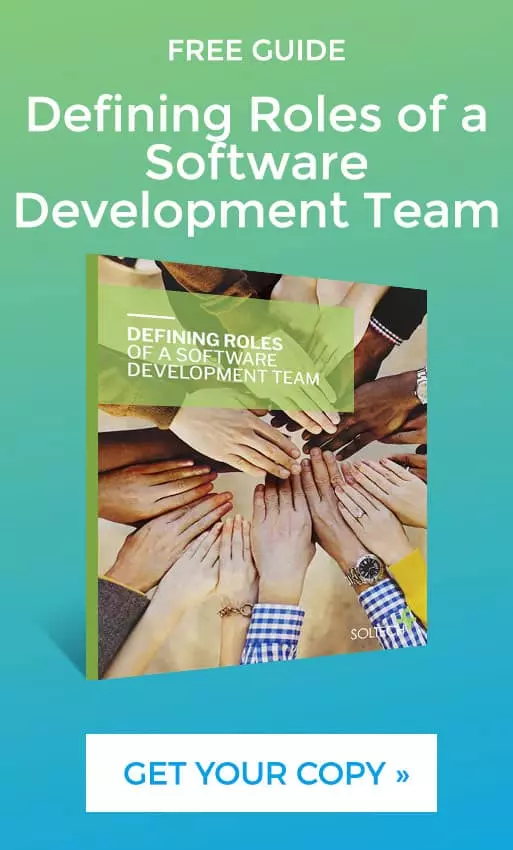
The 3 Types of Web Applications
By Thayer Tate
There are plenty of ways to organize and define web applications. In certain contexts, you may want to divide web apps by their intended audience and function. In others, it can make the most sense to distinguish between static, dynamic, single-page, and similar categories.
Today, we’ll briefly define web apps in general. Then, we’ll shift our focus to the three web application types that we develop. Each one has the power to serve your customers and address their needs. The choice comes down to the audience, key features, and specific goals your organization has for developing a new web app.
What are Web Applications?
A web application is an interactive online tool delivered over the internet and accessed through a browser.
A comparison with websites can help to define web applications. Websites are also delivered over the internet and accessed through a browser. However, websites tend to serve a general purpose and are largely static (excluding certain features, like web apps present on a site). Web apps, on the other hand, are designed to be interactive and serve a specific purpose.
Web apps range from single-purpose tools developed for a specific company’s needs to widely used applications like email programs.
Web applications do not need to be downloaded by users, requiring less upfront investment on their part. When they’re developed properly, web apps are also broadly accessible with just an internet connection and a common web browser on computers and mobile devices.
Wondering if you need a website or a web application? This article covers everything you need to know to make the right decision when it comes to building a web application.
How Many Types of Web Applications Are There?
3 Types of Web Apps: Business Solutions for Diverse Needs
Each of the following apps serves a distinct audience and has a clearly defined purpose. However, all web apps ultimately solve a problem. The specifics can vary greatly, but it’s important to remember their shared intent.
B2C and Customer-Facing Web Apps
A web app designed for individual customers has to offer ease of use and an exceptional experience.
Individual customers tend to act on their own behalf or to help a relative or friend. They aren’t representing a business or being paid for their time. That means they have different priorities and interests than a B2B audience.
B2C customers want experiences with a minimum of friction and that reliably deliver the product, experience, or function they’re seeking. They enjoy design flourishes and rich content, things that can make the experience less similar to a B2B purchasing process, as long as the functionality isn’t compromised.
End consumers tend to have plenty of businesses interested in their patronage. A web app that is too complex or hard to use can discourage them from moving forward. Unless your company offers a totally unique product or service, a hard-to-use or poorly functioning web app may drive them to a competitor.
B2C and customer-facing web apps range from shopping carts for ecommerce sites to self-service portals for utility and telecommunications providers. With such diversity, purposeful and targeted development is crucial. Make sure your organization finds a partner that can develop a web app as a solution for your specific audience.
B2B Web App Development
B2B audiences tend to focus on getting things done efficiently. They understand their company’s needs and goals, which means they seek out tools to help them realize those objectives.
Every company will look into additional vendors and find new partners when business conditions call for it. However, many B2B relationships are built on years of successful cooperation and regular interactions.
The best B2B web apps strengthen that relationship. They make it easier for a client to submit a purchase order or to request service. Ultimately, a dependable B2B app gives a customer another tool they can use to reliably complete a task or address a need.
Dependability, ease of use, and intuitive features and functions are crucial in a B2B web app. While a web app’s design needs to support users and not detract from the overall experience, it may not be as important to include stylistic flourishes and other elements that are more common in B2C web apps.
This audience doesn’t particularly need something to be on the cutting edge of popular digital design. It’s more interested in easily finding the features and functionality that align with key job duties, and knowing a web app is generally reliable and functions as intended.
Employee Portals and B2E Products
An internal audience — employees and potentially other types of workers and contractors — is very distinct from a B2B or B2C audience.
Businesses can and should use portals and other B2E products to support new initiatives and generally encourage employees. However, there isn’t the same focus on a sale or consumer-related function, as is found in the other two types of web apps we’ve listed in this article.
The problem solved by a specific internal web app isn’t customer focused. Instead, it’s related to addressing an inefficiency or seizing an opportunity internally. Web apps can help employees stay connected with the company and each other, improve efficiency, and increase engagement with their work.
There is an especially wide range of potential use cases for B2E. Some apps can address common needs that exist regardless of industry or size, such as self-service tools for HR-related functions like timekeeping. Others can be highly specific to the field a company operates in, or even the type of work completed by a specific kind of employee.
Ease of use, reliability, and intuitive operations are all critical for successful B2E web applications and portals. Design and content should also be considered, as motivating staff to use these apps is critical to their long-term success.
A Dependable Partner for All Types of Web Applications
Web apps can deliver specific features and functionality that benefit your staff, end consumers, and business clients. At SOLTECH, our custom approach to web application development means we collaborate with your team and adapt to your needs.
Want to learn more about web app development? Take a deeper dive into the best tech stack for custom web apps and the costs of web app development.
Thayer Tate
Chief Technology Officer
Thayer’s expertise expanded as he obtained his Project Management Professional (PMP) certification and joined SOLTECH, an Atlanta-based technology firm specializing in custom software development, Technology Consulting and IT staffing. During his tenure at SOLTECH, Thayer honed his skills by managing the design and development of numerous projects, eventually assuming executive responsibility for leading the technical direction of SOLTECH’s software solutions.
As a thought leader and industry expert, Thayer writes articles on technology strategy and planning, software development, project implementation, and technology integration. Thayer’s aim is to empower readers with practical insights and actionable advice based on his extensive experience.




